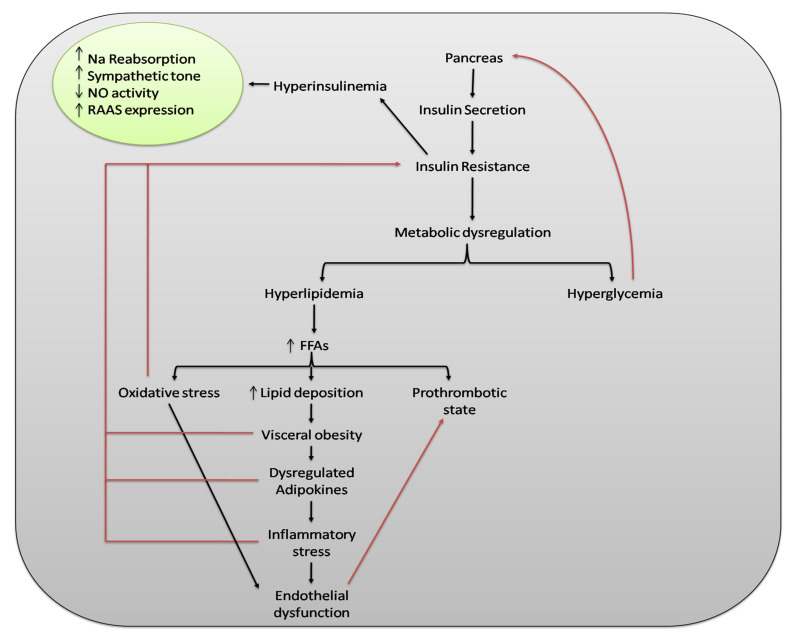Figure 1.
The impact of a dysregulated metabolism on the human body. The central element of metabolic syndrome (MS) is insulin resistance, which leads to metabolic dysregulation and eventually results in hyperglycemia and hyperlipidemia. Hyperglycemia stimulates β-cells of the pancreas and thus produces more insulin, which causes hyperinsulinemia. Hyperinsulinemia increases sympathetic tone, RAAS expression, and sodium reabsorption through nephrons while decreasing NO activity. Dysregulated fat metabolism results in increased production of FFAs and thus lipid deposition increases, resulting in visceral obesity. Visceral obesity causes dysregulation of adipocytokines and pro-inflammatory processes and leads to inflammatory stress. Increased production of FFAs also causes oxidative stress and prothrombotic states via other mechanisms. Oxidative and inflammatory stresses may lead to endothelial dysfunction, which may further contribute to a prothrombotic state. Oxidative stress, visceral obesity, dysregulated adipocytokines, and pro-inflammatory cytokines further contribute to insulin resistance. Increase (↑); decrease (↓); sodium (Na); nitric oxide (NO); renin-angiotensin-aldosterone system (RAAS); free fatty acids (FFAs).

